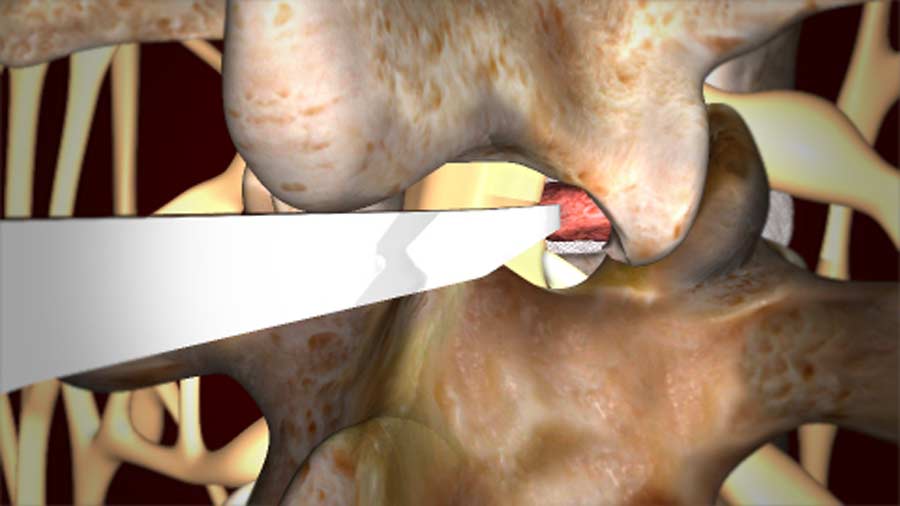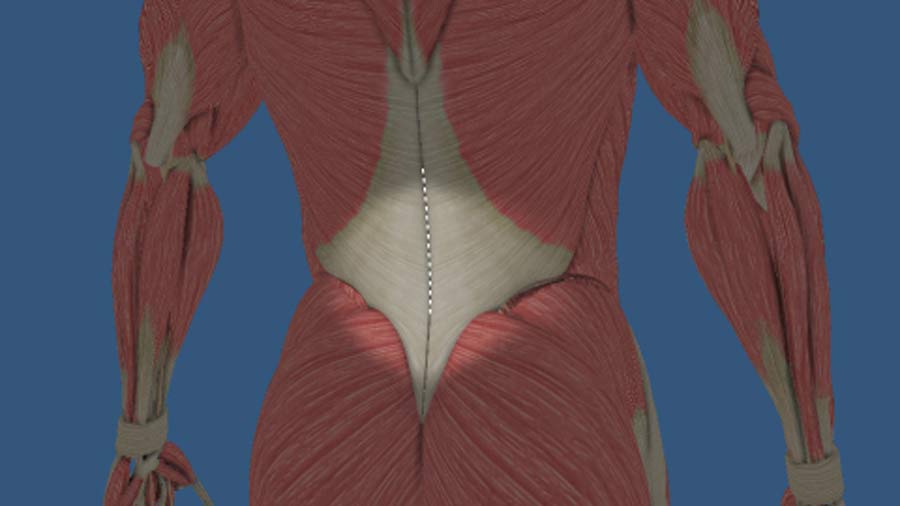Lumbar Microdiscectomy
Here’s what you need to know about lumbar microdiscectomy:
Description of surgery
The Surgical goal is to relieve the pressure on the spinal nerve by removing the disc material causing the leg pains.

A microdiscectomy is performed through a one inch incision in the lower back. The back muscles (noted here as erector spinae) are lifted from the bony arch (laminae). A small portion of this bone may be removed to allow the surgeon to better visualize the herniated disc. As you can see, the back muscles run vertically along the spine and the surgeon can gently push through these muscles rather than cut through them. A combination of retractors and tubes aided by magnification are used to help visualize the disc and nerves. The surgeon then moves the nerve sac and nerve root to the side, and the offending disc material is removed from under the nerve root. Without the pressure from the herniated disc, the nerve is free to heal and the pain lessens or goes away. The muscles are returned to their original position and the incision is closed back up.

While it normally takes several weeks or months for the nerve root to fully heal, most patients report feeling immediate relief from leg pain after the surgery. A microdiscectomy is a minimally invasive procedure leaving the joints, ligaments, and muscles mostly intact. The procedure itself only takes one to two hours and patients can expect to return home the same day.
Why get it?
Your doctor has considered this surgery if the examinations they conducted are consistent with your symptoms of pain. It works great for treating leg pain caused by a disc herniation. It is not specifically designed to relieve back pain.
If a patient’s leg pain gets better without any intervention, symptoms will generally improve within six to twelve weeks. If the pain is tolerable and daily function isn’t severely hindered, most doctors will recommend waiting to see if the pain resolves itself over time.
However, if the pain is debilitating and you are unable to perform your daily activities, consult your doctor to see if surgery can be considered before the six week mark.
Why not? Potential complications
As mentioned earlier, a lumbar microdiscectomy is not effective in relieving back pain despite the location of the herniated disc.

Rates of reoperation and recurrent herniation are fairly low for lumbar microdiscectomies ranging from 5 to 18%. Complication rates are also low but every surgery has risks. If you have any specific concerns, please consult your doctor.
Discectomy variations
Open lumbar microdiscectomy is considered the gold standard for surgically treating lumbar disc herniations. Another surgery used to treat lumbar disc herniations is percutaneous endoscopic lumbar discectomy or PELD. While endoscopic discectomy has an attractive minimally invasive appeal, the learning curve for surgeons remains steep, and the outcomes are influenced by that curve.
I hoped this helped your understanding of lumbar microdiscectomy. Until next time, this is Dr. John Shim.
Citations
- Meyer G, DA Rocha ID, Cristante AF, Marcon RM, Coutinho TP, Torelli AG, Petersen PA, Letaif OB, DE Barros Filho TEP. Percutaneous Endoscopic Lumbar Discectomy Versus Microdiscectomy for the Treatment of Lumbar Disc Herniation: Pain, Disability, and Complication Rate-A Randomized Clinical Trial. Int J Spine Surg. 2020 Feb;14(1):72-78. PubMed PMID: 32128306
- Koebbe CJ, Maroon JC, Abla A, El-Kadi H, Bost J. Lumbar microdiscectomy: a historical perspective and current technical considerations. Neurosurg Focus. 2002 Aug 15;13(2):E3. PubMed PMID: 15916400
- Asch HL, Lewis PJ, Moreland DB, Egnatchik JG, Yu YJ, Clabeaux DE, Hyland AH. Prospective multiple outcomes study of outpatient lumbar microdiscectomy: should 75 to 80% success rates be the norm? J Neurosurg. 2002 Jan;96(1 Suppl):34-44. PubMed PMID: 11795712
- Lee DY, Shim CS, Ahn Y, Choi YG, Kim HJ, Lee SH. Comparison of percutaneous endoscopic lumbar discectomy and open lumbar microdiscectomy for recurrent disc herniation. J Korean Neurosurg Soc. 2009 Dec;46(6):515-21. PubMed PMID: 20062565
Last modified: March 24, 2021









